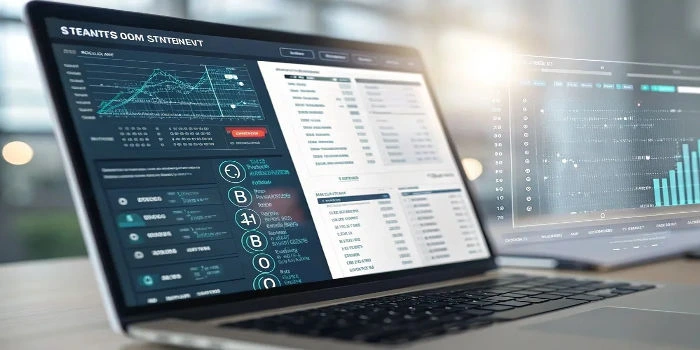20-22 Wenlock Road, LONDON, N1 7GU
20-22 Wenlock Road, LONDON, N1 7GU

Bank statements contain essential financial details like transactions and balances, but manually extracting this data is time-consuming and prone to errors. OCR (Optical Character Recognition) and AI (Artificial Intelligence) automate the process, making data extraction faster, more accurate, and highly efficient.
In this blog, we’ll explore how OCR and AI work together to extract data from bank statements step by step and how businesses and individuals can benefit from this technology.
OCR and AI in Data Extraction are technologies that convert scanned documents into machine-readable text while enhancing data accuracy and context.
Bank statement OCR is a technology that converts scanned images, PDFs, or handwritten bank documents into machine-readable financial data. It identifies characters, numbers, and symbols in a document and converts them into digital text.
OCR used in banks helps automate document processing, reduce manual entry, and speed up financial data handling to digitize and process documents automatically.
While OCR extracts text, AI enhances the process by understanding context. It identifies transaction amounts, dates, and merchant names, categorizes transactions (e.g., income, expenses), and ensures accuracy through validation.
By combining OCR with AI, organizations can automate the extraction of bank statement data with minimal errors.
Extracting financial data manually from bank statements is inefficient for several reasons:
Using OCR & AI, businesses can:
Collect and Organize Bank Statements for Efficient Processing. Using a reliable bank statement scanner helps capture clean, high-resolution images, which improves OCR performance and reduces errors in data extraction.:
Before extracting data, preprocessing ensures better OCR performance:
OCR for bank statements scans financial documents and extracts key transaction details like dates, amounts, and descriptions. Popular bank statement extraction software includes:
OCR converts the bank statement into raw text but may not perfectly extract structured data, especially from tables. This is where AI helps.
AI models process OCR-extracted text to structure and categorize the data.
With OCR, bank statements can be converted to Excel formats, making it easier to analyze, audit, or import into accounting systems.
This enables businesses to integrate bank statement data into accounting software, ERP systems, or custom financial dashboards.
Even with AI, data extraction may not be 100% perfect. To ensure accuracy:
Businesses, financial institutions, and fintech companies use OCR & AI to streamline operations and improve efficiency.
OCR and AI offer an efficient solution for automating bank statement extraction, helping streamline financial operations and reduce manual workload. By combining OCR’s speed and accuracy with AI’s intelligence, businesses and individuals can reduce manual effort, minimize errors, and streamline financial processes.
This technology enables quick, secure data extraction from various formats, improving decision-making, simplifying accounting, and supporting financial management. As OCR and AI evolve, their role in data extraction will grow, providing greater efficiency, accuracy, scalability, and cost savings.
OCR converts scanned images or documents into machine-readable text by recognizing characters and symbols.
OCR for bank statements extracts raw text, and AI enhances this by categorizing transactions, identifying amounts and dates, and validating data for greater accuracy.
OCR and AI used in banks save time, improve accuracy, adapt to multiple statement formats, reduce security risks, and accelerate financial decision-making.
Popular OCR tools include Caelum.ai, etc.
Yes, AI and OCR can adapt to various formats, such as PDFs, scanned images, and digital text, ensuring accurate extraction.